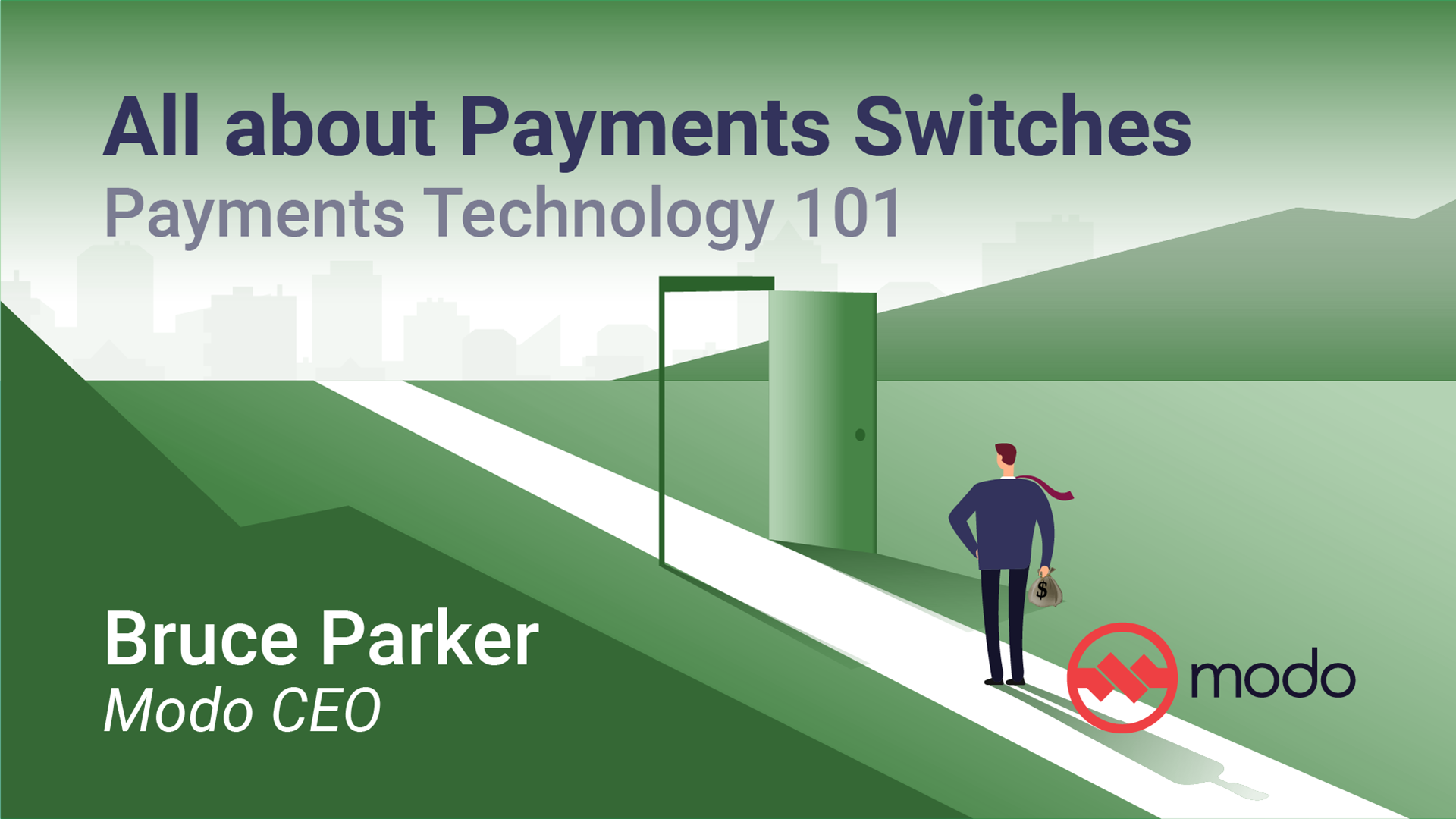Modo CEO, Bruce Parker, talks in detail about what a payments switch is, how companies use it, what its limitations are, and how to choose the right one for your payments stack.
What is a payments switch?
A payments switch is like the original gangster of payments software. So that's the piece of software that's been sitting around for a long time, actually everywhere, in the payments ecosystem - there are switches at banks, there are switches at places like Visa and Mastercard, and then there are switches at a number of very large merchants. Sometimes people have actually had their own, and other times the payment service provider actually had the switch, which maintained interactions, or routes, between various payments that payments could be processed.
A payments switch is specifically focused on processing payments so it doesn't do anything about settlement and reconciliation. It generally doesn't really help with things like reversals, expectations, or disputes. Sometimes it will process the transaction for a refund, but, in general, a switch knows about how payments are processed, or transacted. It doesn't really know about how payments result in money movement or are accounted for.
What are some examples of popular payment switches?
Leading providers of switches include folks like ACI Worldwide, FIS, and others that over the years have typically used legacy technologies like tandem computers (Go NonStop!) in order to provide highly reliable services. But, those infrastructures, as you might imagine, are kind of dated at this point and have turned out to be relatively inflexible as we've seen a lot of change happening in payments. It's interesting that the switch market in general - because there are such large providers in it today like ACI, like FIS, like Fiserv and others - really hasn't seen a lot of innovation. So it's been a long time since there has been a meaningful new entrant in the switch market as a switch. Typically, folks have offered that software as part of some broader offering. For instance, there's switch software at Adyen. There's switch software at Stripe and Braintree and others. But typically those organizations have included it as part of a payments service rather than offering it as software independently.
Why do I need a payments switch?
Most organizations that weren't a bank, weren't somebody like Visa or Mastercard, or weren't a payment service provider or a processer themselves who ended up choosing to buy and implement a switch, in past days, were simply doing that to be able to have options and to control how their payments were routed and how their payments were managed themselves. These ended up being very very large merchants in most cases. Because those are tending to be on legacy infrastructure like mainframes or Tandems, those organizations have made huge investments in order to be able to maintain those infrastructures over a very long period of time. Typically, that's been worthwhile precisely because they've been able to save money by routing transactions where they wanted and to be able to control the experiences that their customers had.
How do I decide if a payments switch is right for me?
In today's world, deciding about a payments switch is usually about deciding about broader questions about how payments software and payments technology is going to be managed within your organization. The vast majority of organizations, certainly in the last several years, let's say ten years, have actually made all of those decisions by deciding on their payment services provider. There is a new move afoot to say, "Well, I might be an organization who is large enough to want to control my own infrastructure and really make a lot of decisions about how payments work in my organization, but I also am not willing to do all that work myself." So if we look at somebody like an Uber, or an Airbnb, or a Lyft, or a Netflix, they've spent a tremendous amount of time and energy building out a payments infrastructure that they own, operate, and control. But they did that themselves. The vast majority of them didn't use a product from a vendor. We are now seeing a number of entities coming to marketplace who would be classically considered enterprises, would be classically considered within the Fortune 50 and within the Global 1000, as organizations that may not be quite as aggressive about things like payments as Netflix has famously been. So, that hasn't been served very well to this point in the vendor marketplace, but we do think that that's changing.
Watch other related videos
